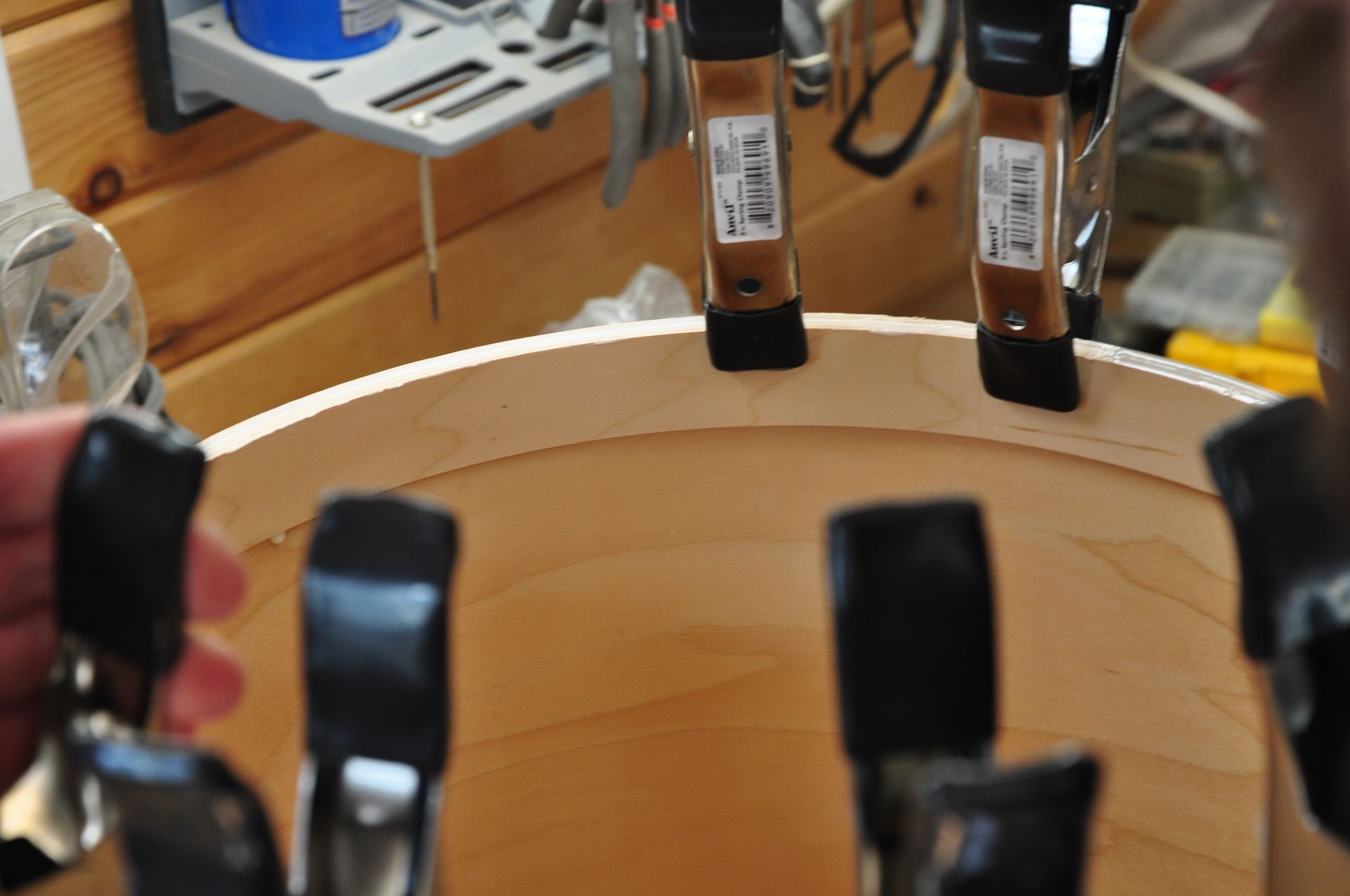Exploring the Materials in Drumming
In the enchanting world of drum making, the choice of material for drum shells is akin to an artist choosing their canvas and paints
- it defines the essence of the sound. Whether you're a seasoned drummer or a curious enthusiast, understanding these materials is key to appreciating the artistry behind your instrument. Let's embark on a journey through the diverse materials used in drum shell construction and discover how each contributes to the symphony of sound.
1. The Classic Wood Shells
- Maple: A drummer's darling, maple is known for its balance of warmth and projection. It's like the vanilla of drum shell materials – versatile, reliable, and adored by many. With a long sustain and a mid-low to mid-bright tonal character, maple shells, like those from Naptown Drum Company, offer a sound that's as smooth as it is dynamic.
- Birch: Step into the studio with birch, and you'll understand why it's a recording favorite. Birch shells, with their boosted highs and lows and slightly reduced mids, offer a naturally EQ’d sound. It’s like having a built-in sound engineer in the wood!
- Mahogany: Diving into lower frequencies, mahogany shells offer a warm, rich tone with a soft, vintage feel. Perfect for genres where a deep, resonant sound is key, mahogany drums are like the jazz singer of shells – soulful and full of character.
- Oak: For those seeking volume and attack, oak shells are the answer. They bring a bright, punchy sound with great sustain, making them the rock stars of the drum world.
2. The Exotic Alternatives
- Bubinga: This heavyweight contender delivers a powerful punch. Bubinga shells are known for their deep, dark, and complex tones, offering a richness that can elevate any drum kit.
- Bamboo: Step into sustainability with bamboo shells. They are not just eco-friendly but also provide a unique, bright, and focused sound. Bamboo drums are for those who march to the beat of a different drum, quite literally!
3. The Metal Maestros
- Steel: Bring in the brilliance with steel shells. Known for their bright, cutting tone, steel shells offer a high degree of sensitivity and a wide dynamic range. They are the go-to for drummers looking for a sharp, pronounced sound.
- Brass: For a warmer, more rounded sound than steel, brass shells are the answer. They provide a rich, complex tone that's as suitable for jazz as it is for rock.
- Aluminum: Lightweight and sonically versatile, aluminum shells offer a crisp, dry sound with a lot of attack. They're like the chameleons of the metal shell world, adapting across various musical styles.
4. Synthetic and Hybrid Shells
- Acrylic: For a visually striking option with a punchy, clear tone, acrylic shells are the way to go. They tend to have a louder, more pronounced attack with less overtones - ideal for live performance settings where visuals are as important as sound.
- Carbon Fiber: These shells are on the cutting edge of drum technology. Known for their durability and consistency in tone, carbon fiber shells provide a sound that's as modern as the material itself.
5. The Art of Shell Construction
- Ply Shells: Most wooden shells are made of plies (layers of wood) and their thickness and grain orientation play a significant role in the drum's sound. Thicker shells with more plies tend to produce a louder, more focused sound, while thinner shells offer a more resonant tone.
- Stave and Solid Shells: Crafted like fine furniture, stave and solid shells use fewer glue joints, allowing for a more natural wood resonance. These shells offer a more organic, earthy tone, often preferred by connoisseurs of acoustic nuances.
In Conclusion: The Canvas of Sound
The material of a drum shell is more than just a matter of construction - it's a canvas for sound, painting unique acoustic landscapes. From the warm depths of mahogany to the crisp attack of steel, each material brings its distinct flavor to the music table. Whether you’re a drummer seeking your sound signature or an aficionado appreciating the nuances of drum tones, the world of drum shell materials is a rich field, ripe for exploration. Remember, the right shell material can elevate your music, just as the right brush stroke can complete a masterpiece.







